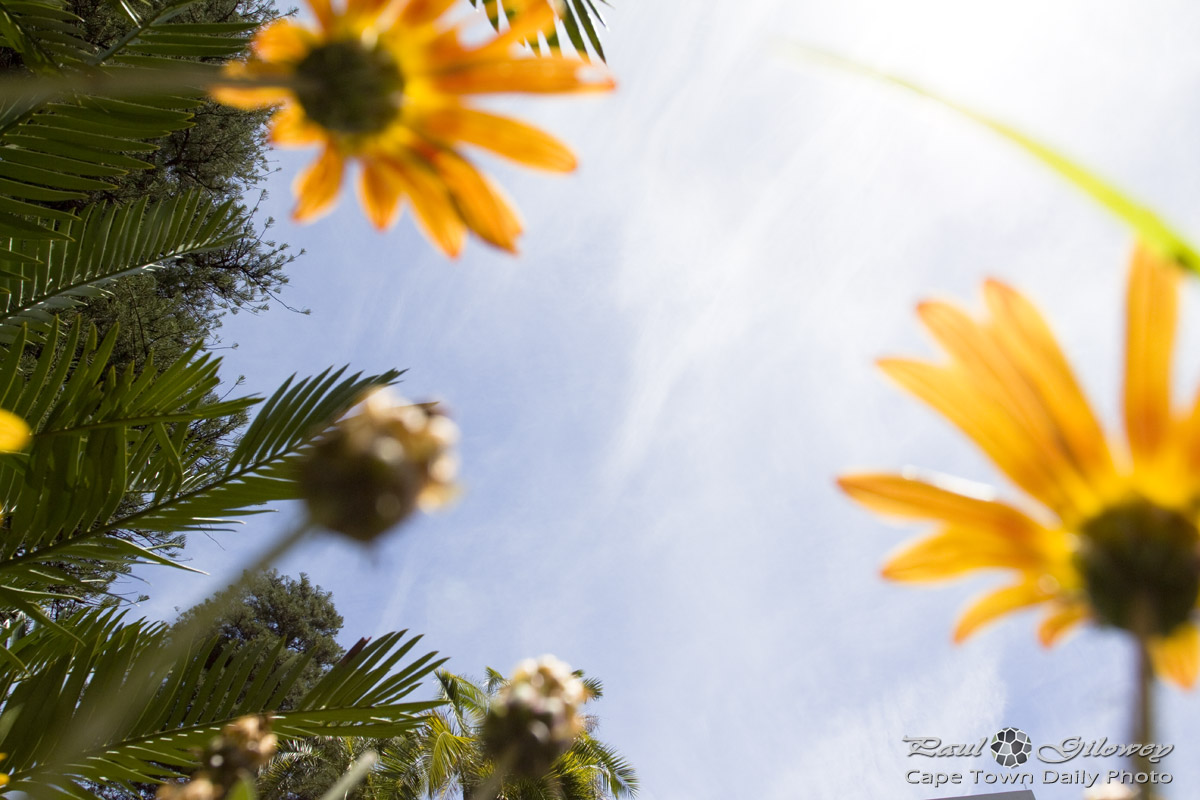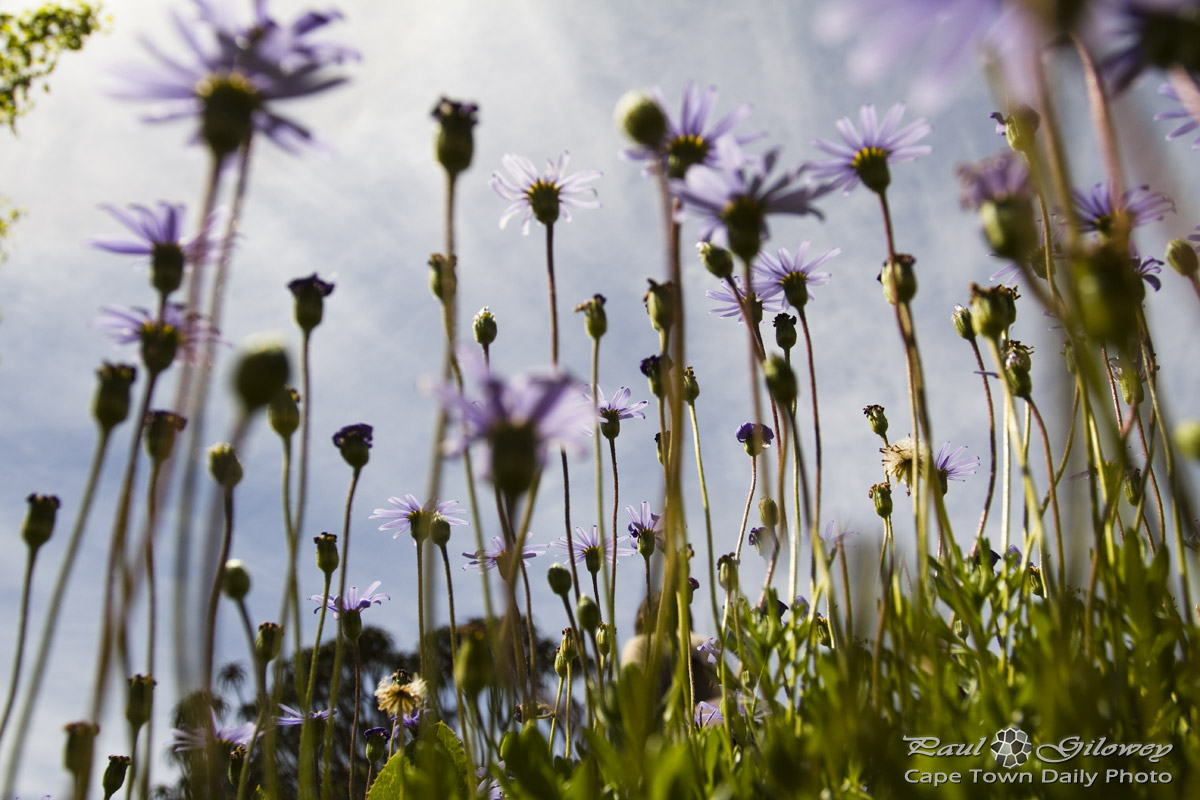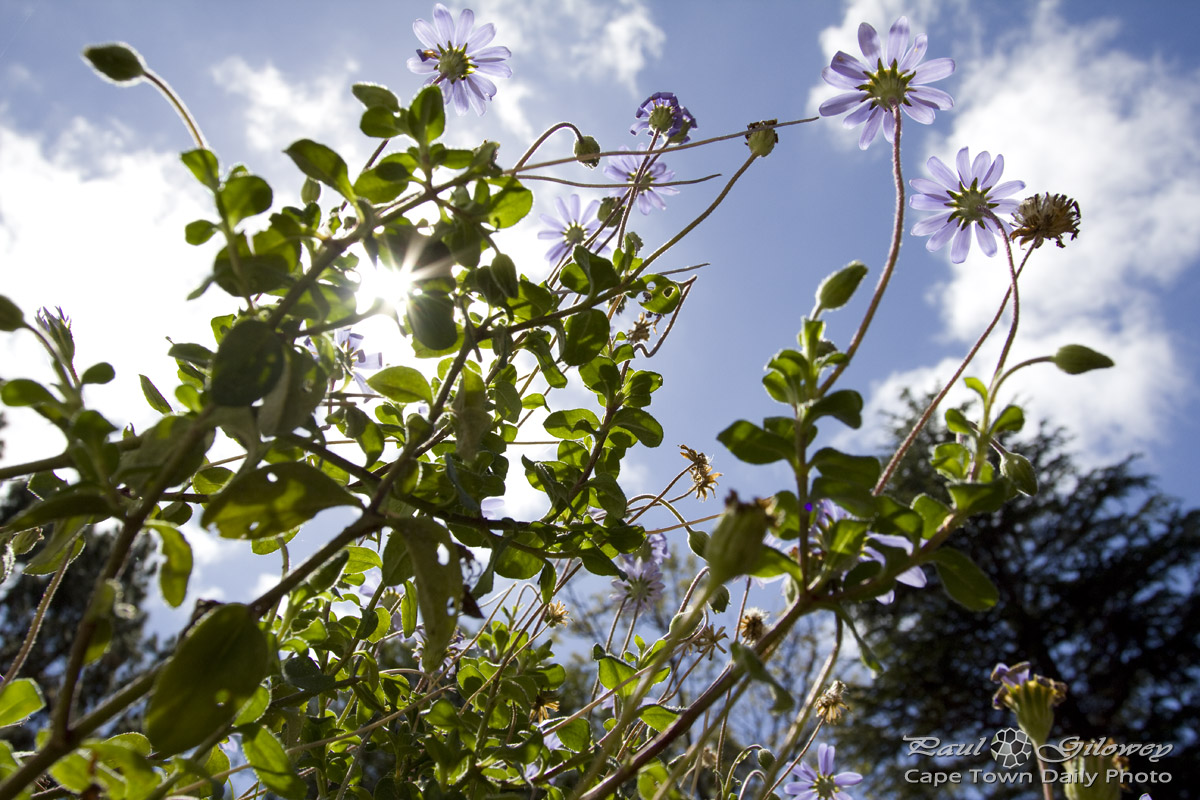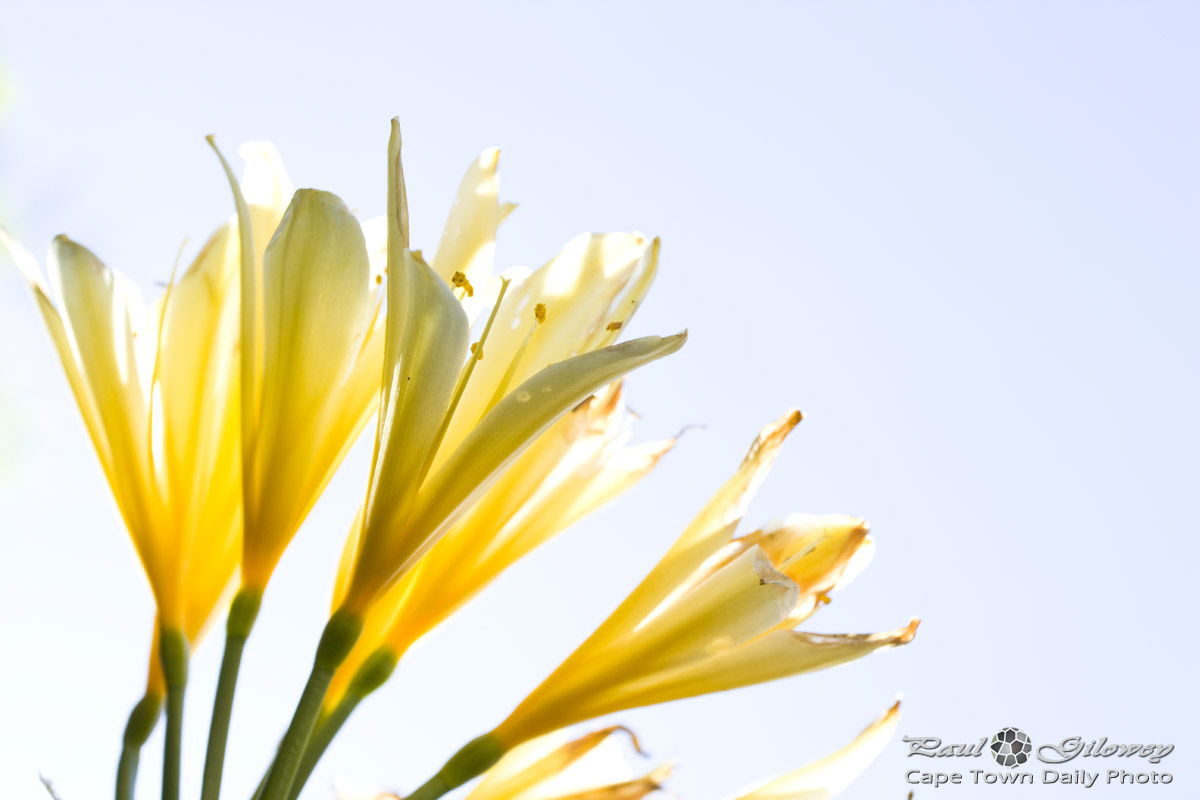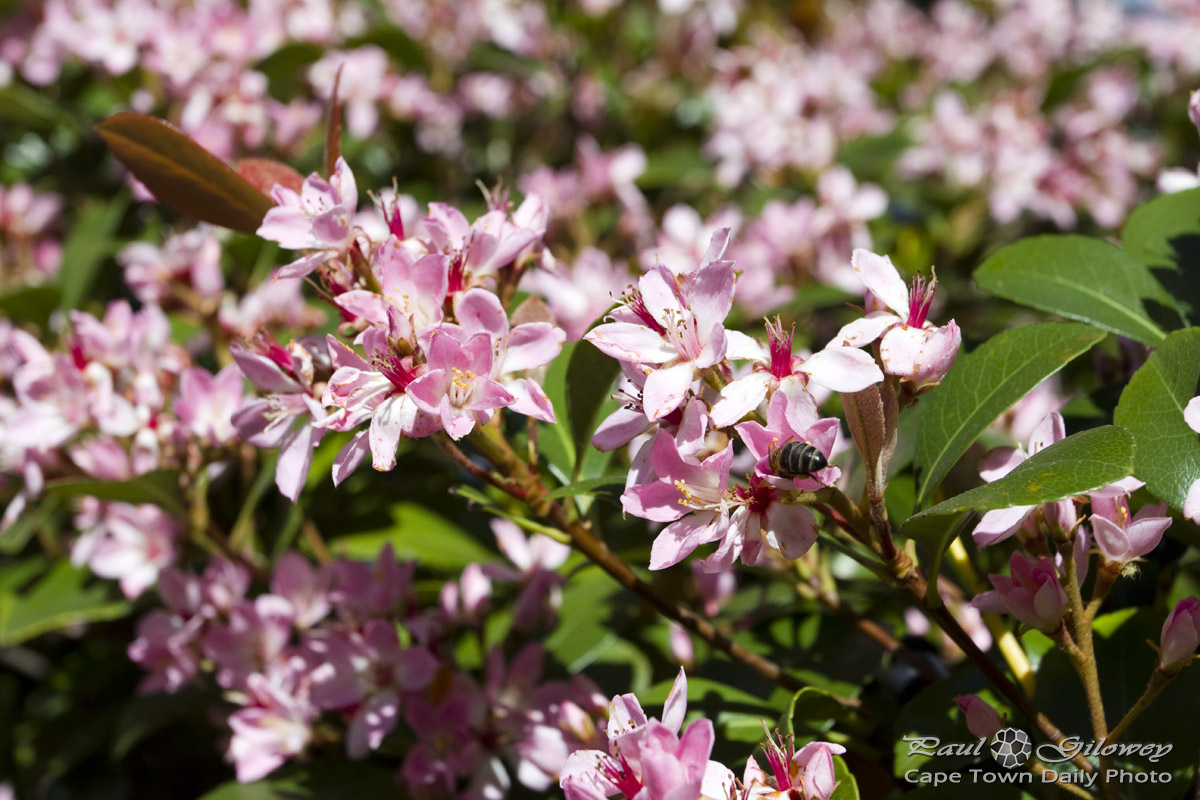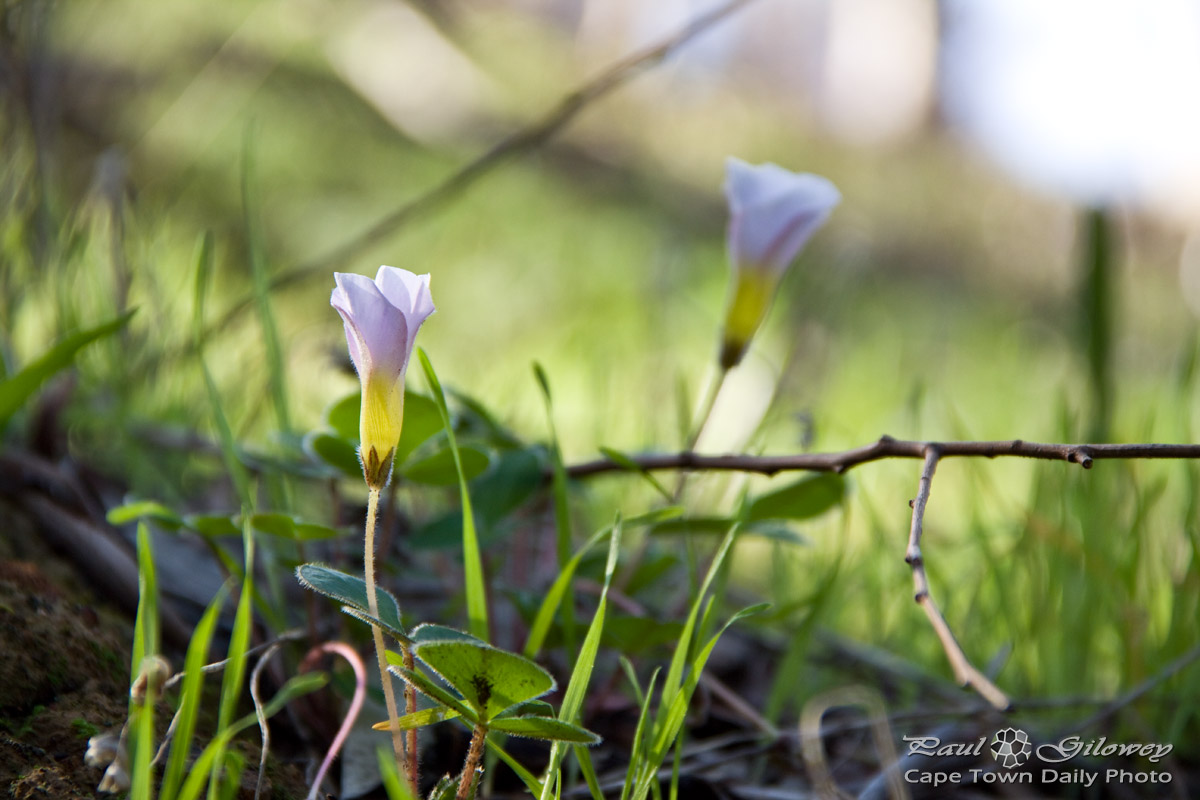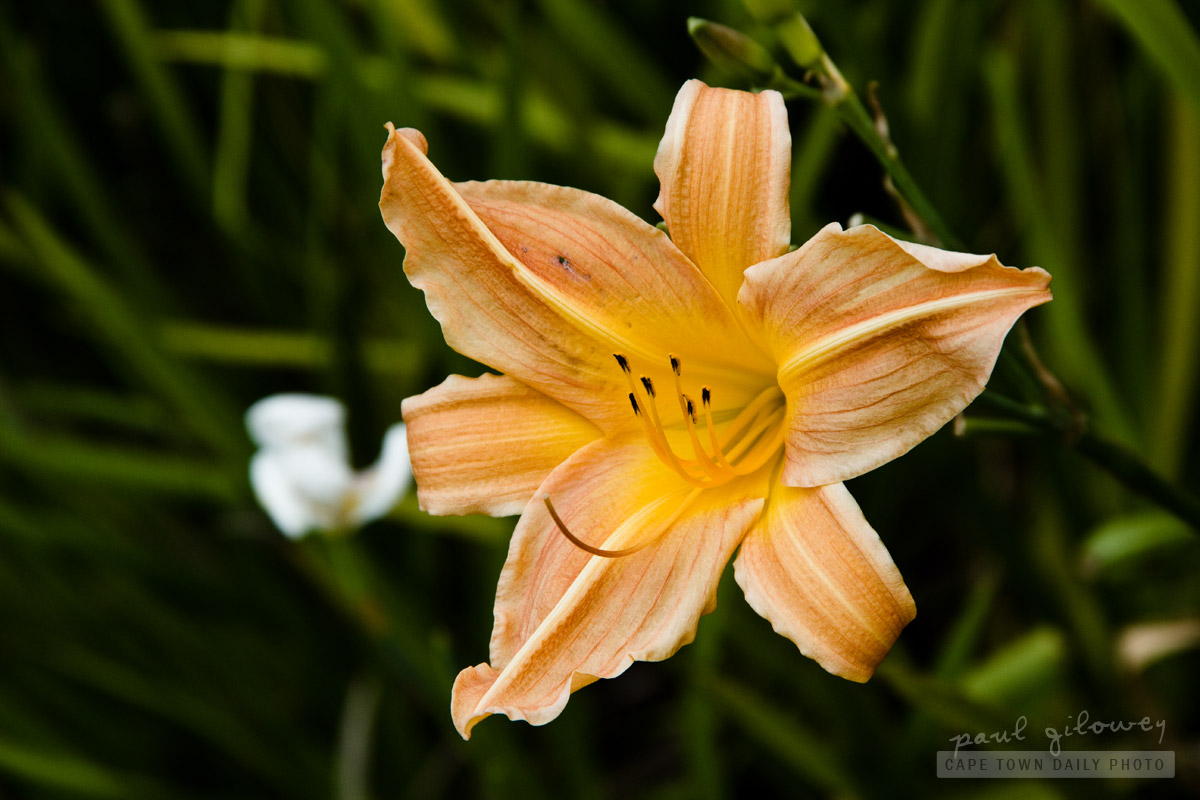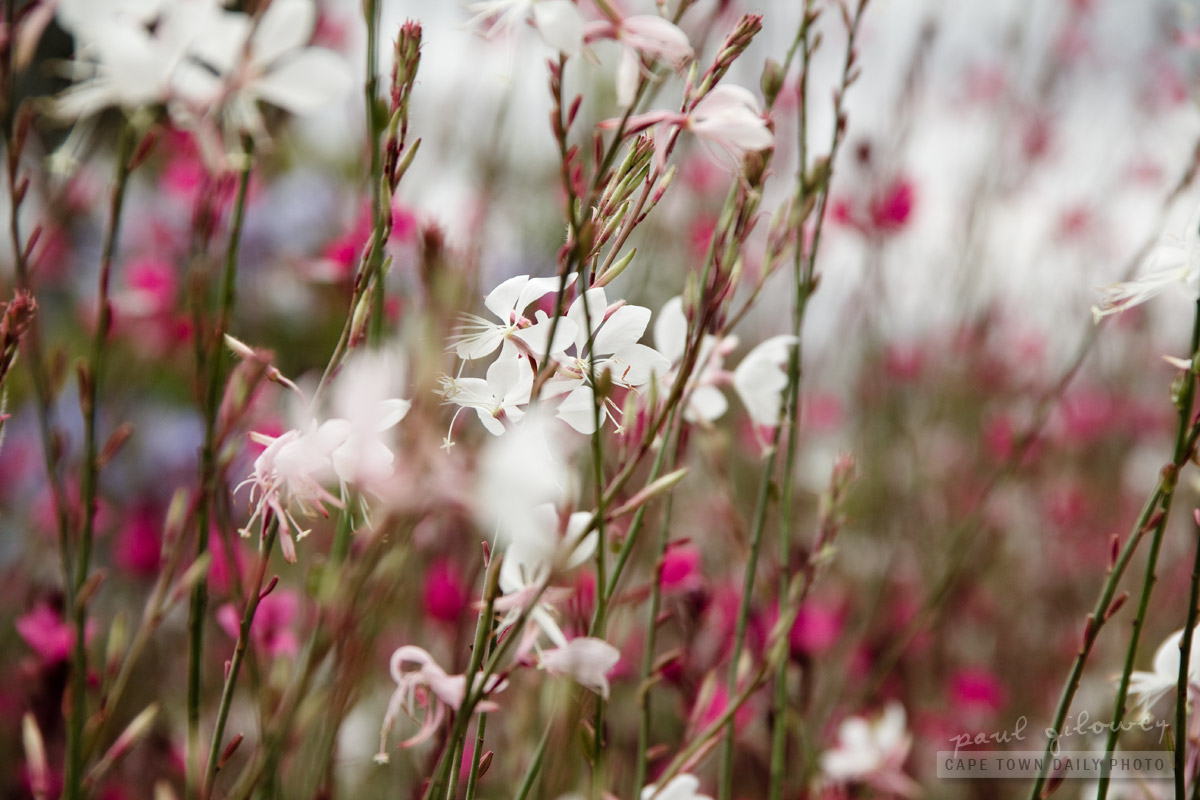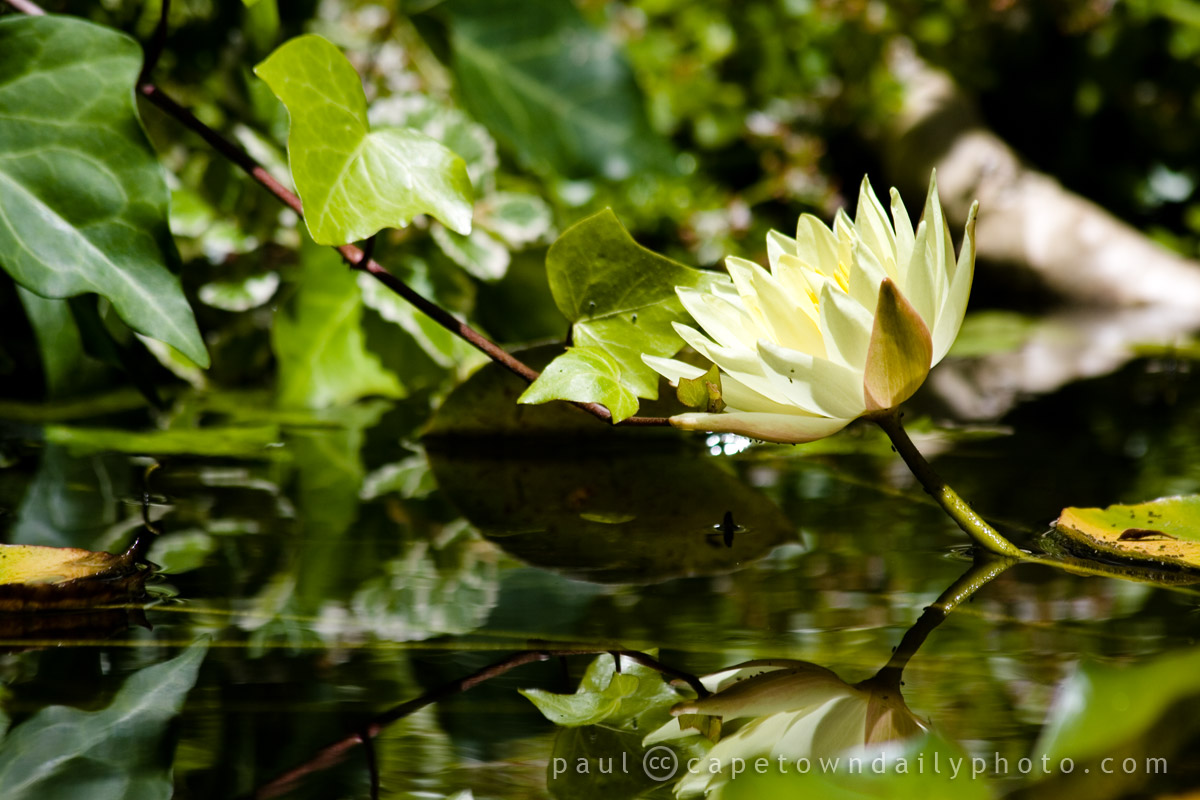Tag Archives: flowers
Reach for the sky
More flowers above
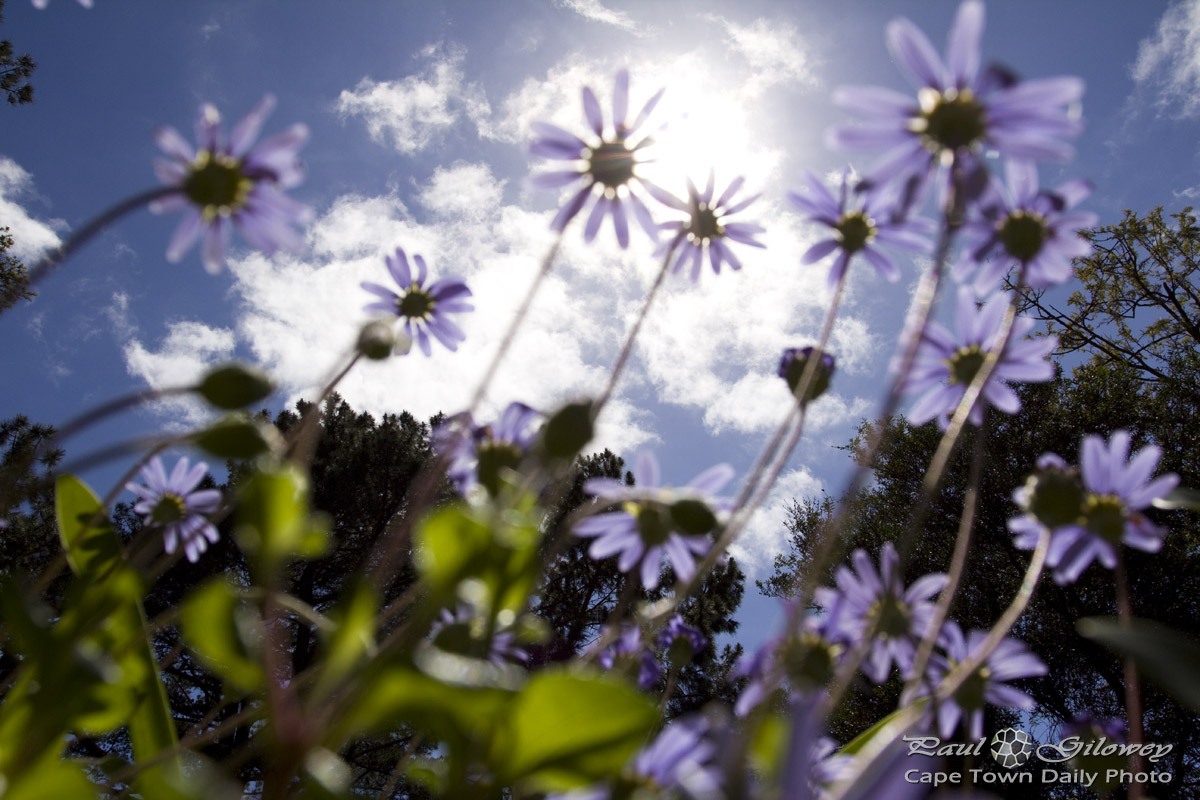
Flowers above
Sunlight petals
Purple flowers
Spring flowers
Peachy rose

I took this photo at about 17h30, while the light was falling and the air was cooling. It was already icy-cold and that got me wondering exactly how delicate flowers like this manage to survive the cold nights that we've had recently.
Sunshine Proteas
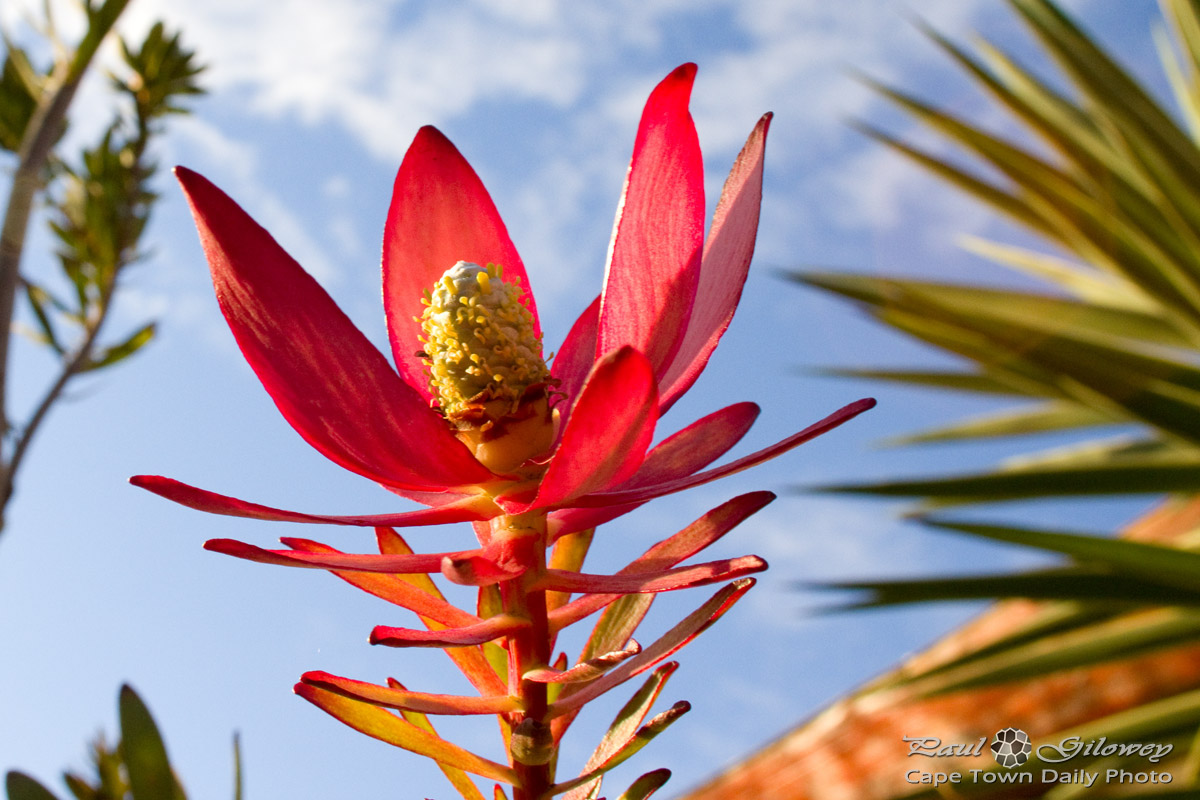
Tiny flowers
Field of flowering oxalis
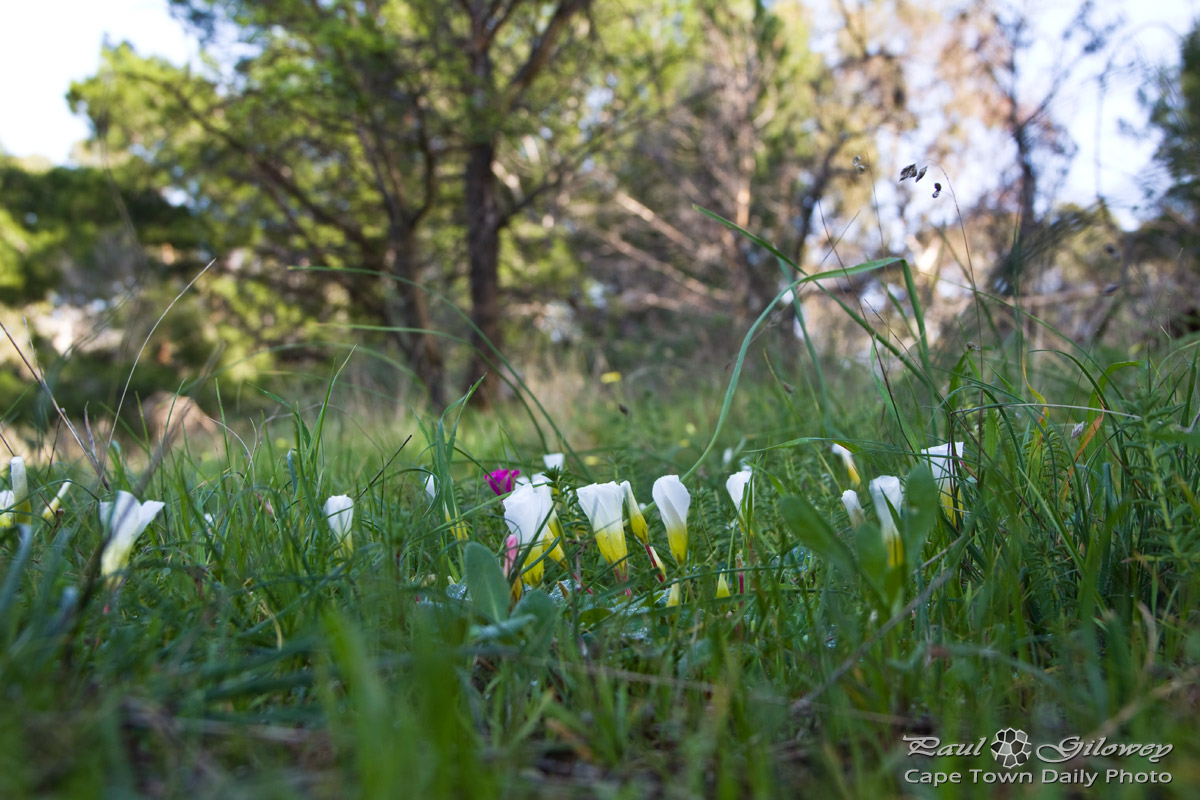
Irrespective of what they're named, and how diverse they are, don't you think they're pretty? Fields, meadows and forests, just wouldn't be the same without them.
A yellow African Marigold
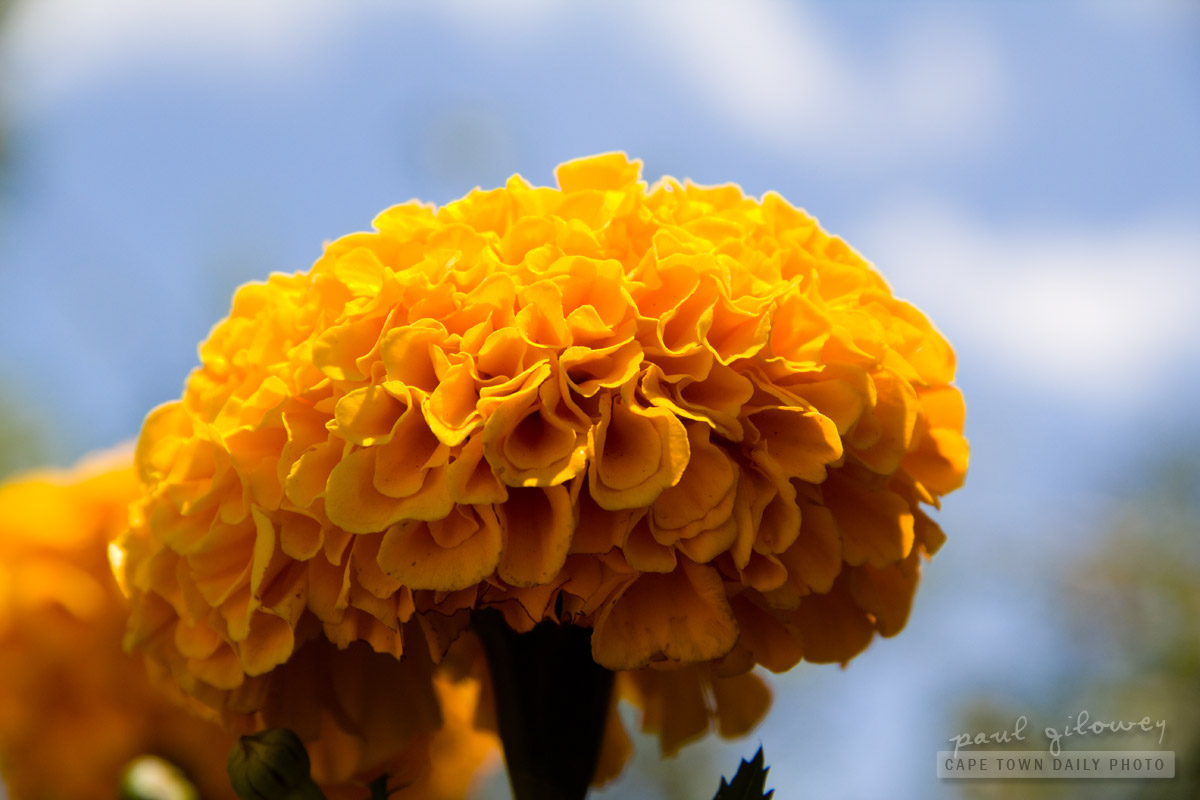
Isn't she pretty?
The thirsty hydrangea

We had a few at out previous home, and even though their large leaves were kept out of the direct sun it seemed as though I could never water them enough! They ultimately passed away - it was sad. :(
The Moonbeam Daylily
Pink ‘n white blowing in the wind
Orange Aloe flowers

Today you'll find many after-sun lotions, anti-eczema creams, etc. in South Africa (and perhaps even in your country) referring to Aloe as a primary ingredient.
Possible medicinal benefits aside - isn't this just a beautiful cluster of flowers?
Tulips in May
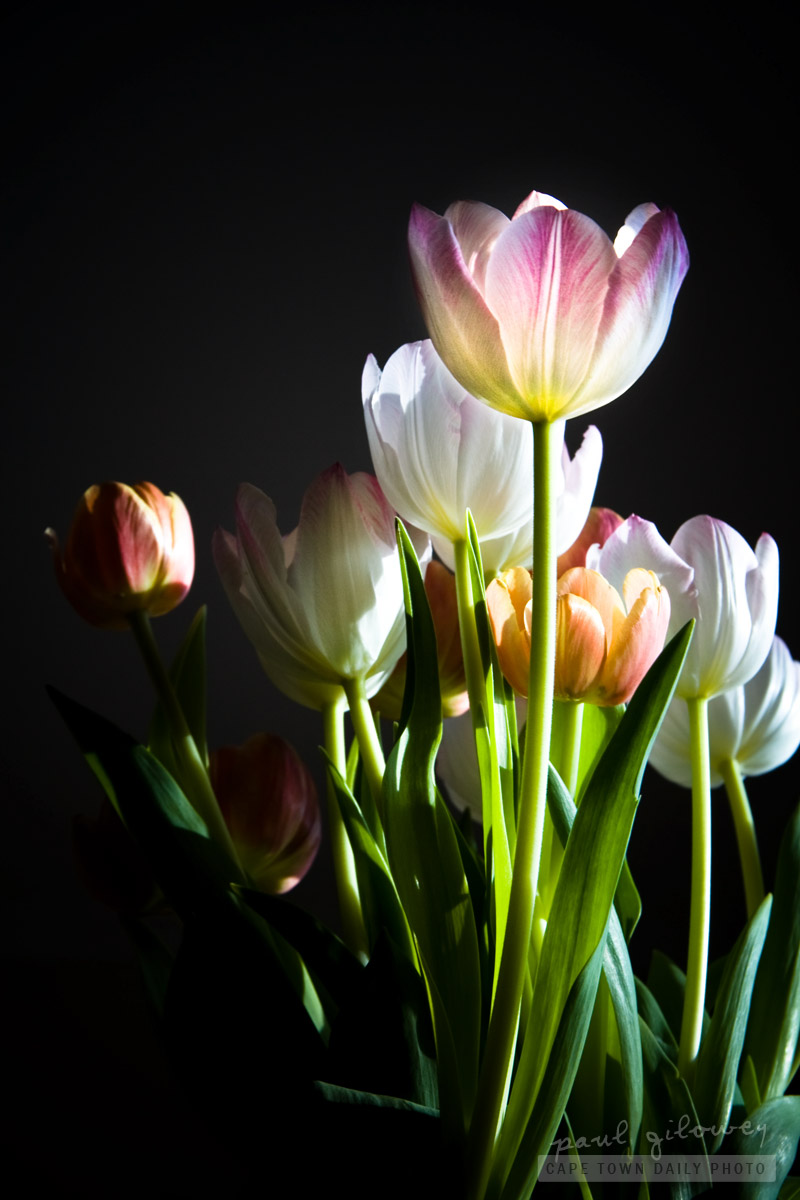
Tulips are perennial bulbs, which means that they flower each year. Although often associated with the Netherlands, according to gardeningeden.co.za, they originate from the Turkish Himalayas.
Even though there are many varieties of tulips, due to our warmish winters and short spring it's only really the Darwin Hybrid that's easy to grow in South Africa. Visit gardeningeden.co.za for information on where and when to plant tulips and how to make sure they survive our slightly-tulip-hostile weather.
Even though I liked the main photo most, I thought that you may appreciate a few more photos of these lovely flowers. Click on the thumbnails below to see the the photos.
The Rat Race comes to town

Lately however it seems that with the migration of hard-working Johannesburg residents to Cape Town that the city has started working longer and harder, and that we've started missing out on what our natural surroundings have to offer. With all the stress and strain our harder working regimen has brought we've started ignoring the natural rejuvenation that nature offers - and it's taking a toll on our minds and bodies.
This I'm guessing is the reason why over the past few years we've seen a huge increase in the number of day spas all over the city and suburbs... if only we had the time to make more use of them... if only we had the time to make use of our mountain, forests, and oceans!
Flower, sea, island

I discovered that that contrary to my previous belief, this is just not true. One of my very own friends had never been to the top! So, even though it was windy as hell (not that I'd know how windy hell may be) I decided that while we were in the city I'd take her on her first trip to the lookout point.
This is one of the photos that I shot while at the lookout point. I'm not sure what plant this is - but isn't it pretty? The wind was blowing furiously and that's how I got that cool, more-or-less-in-focus effect on some branches while others are partially, or completely blurred.
The ocean that you're able to see in the background is the Atlantic ocean that fills Table Bay; and the island that you see out in the distance is the famous Robben Island - South Africa's own version of Alcatraz Island
Durbanville Garden Expo and Open Gardens

Next weekend you could sip tea and eat cake in the gardens, listen to green-thumbed enthusiasts talking about plants, participate in photography workshops, or simply walk around the gardens at your leisure.
Don't miss the outing, it'll be awesome and costs only R20 per person - here's a map. :)
The King Protea, South Africa’s national flower
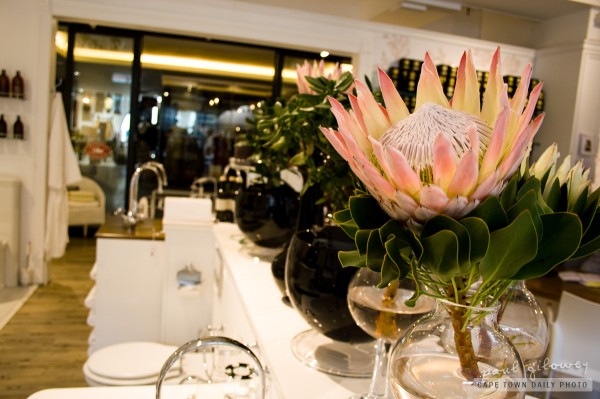
An interesting fact is that the King Protea isn't only grown for export in South Africa, but also in New Zealand, Australia and even Hawaii! If you're interested in reading more about Proteas - or in fact about South African flora in general - visit the PlantZAfrica website. The site's pretty dated, but if you'd excuse it's '90s design there's plenty of information that you may find very useful. :)
Foxgloves and fynbos
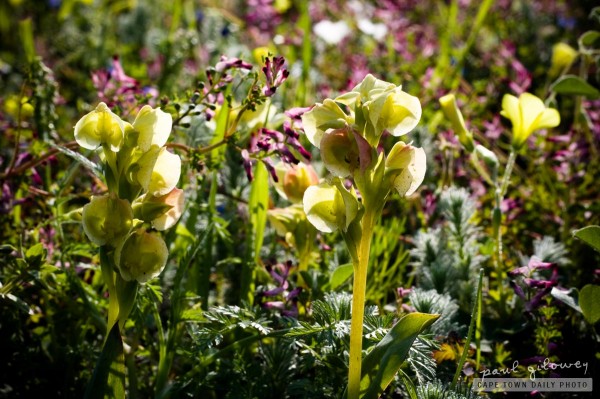
Am I alone in this, or is there anyone else who lives in suburban Cape Town who also thinks that it would be awesome to have a well-kept, but completely Fynbos and wildflower garden instead of manicured grass, popular shrubs and flowers?
Flowers on a hill
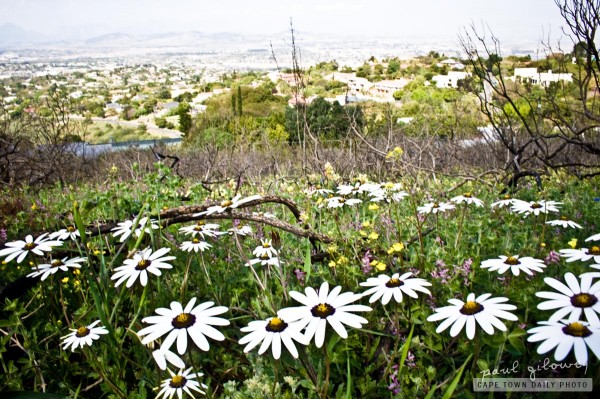
The actual reason for my ascent was to see the multitude of flowers that have sprung up all over the hill. I took the walk just after lunch time, and while (as you may know) the light isn't great for photos around that time of day, it's great for viewing the flowers!
Wild flowers in the Cape sun
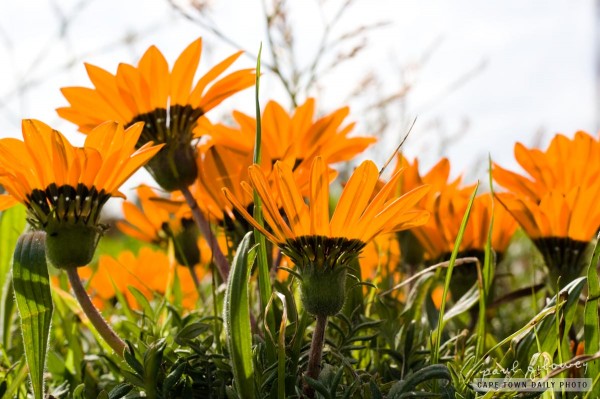
If you're keen on attending flower shows, consider taking a day trip to Tulbagh (map) to see the Tulbagh Horse and Wildflower Show from 22 to 25 September. The show comprises the National Horse Championships along with the natural wildflower exhibition and will more than certainly have food stalls, a beer garden and plenty of arts and crafts stalls.
Email Elsa Rix or call her on 023 230 0189 for further details. Visit Tulbagh Toursim's website for more information about this old town of the Cape.
Bunches of flowers
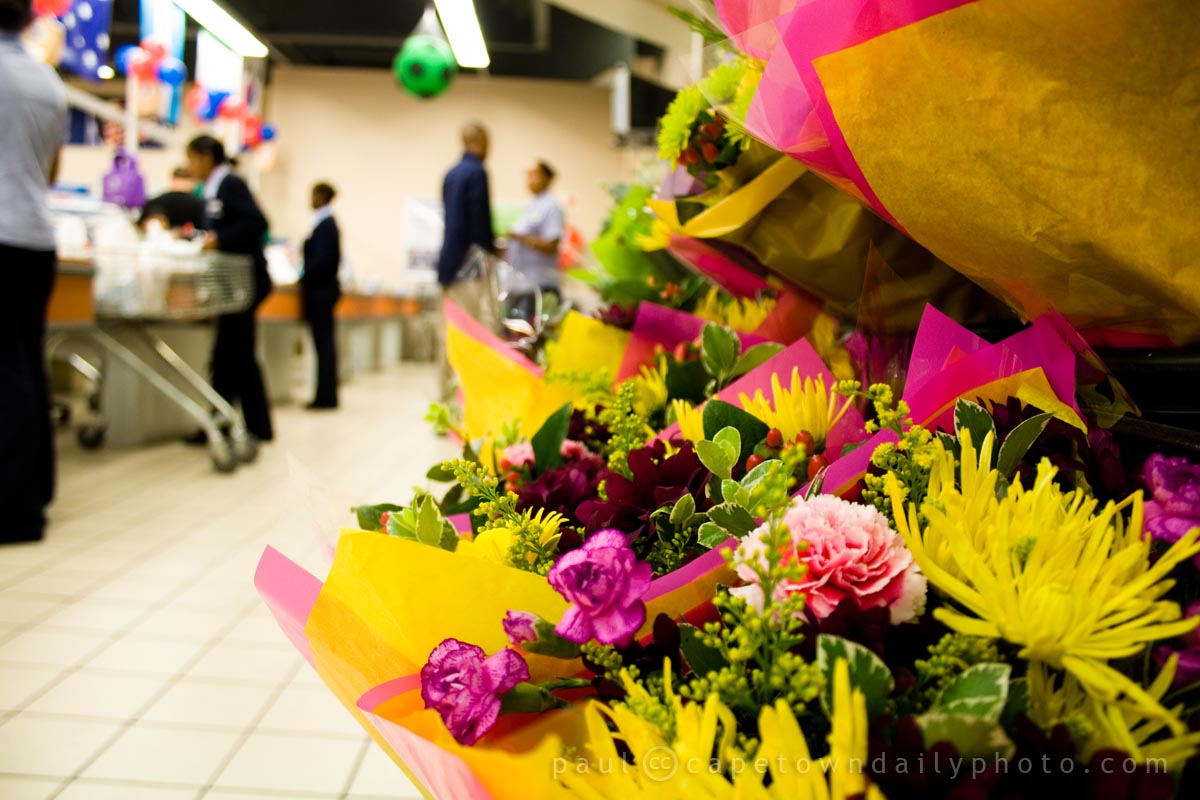
Bunches of flowers bought in a supermarket in Cape Town generally cost between R50 and R80 (between 5 and 8 Euro). What would you pay for a similar bunch where you live?
Nymphaea what?
The flower above is commonly known as a water lily, but to the botanists among you it's more likely known as a member of the Nymphaeaceae family, possibly either the Nymphaea Alba (White Water Lily) or the Nymphaea Capensis (Cape Blue Water Lily). What makes it difficult for me to decide is that the only references I've found so far to water lilies in the Western Cape talk about the Capensis, and yet this flower looks yellowish - a lot like the Alba. But the Alba is apparently found in the northern hemisphere, in places like England and North America.
That aside, I discovered an online store that sells what appears to be dried Nymphaea Alba. One can apparently use the dried flower to make a tea that, according to them, has the following effect: "White Lotus is both narcotic and euphoric. Like Blue Lotus, the plant is said to increase sexual arousal and enjoyment."
Now, while the name Nymphaea appears to support this, I'm keen for someone to (at their own risk ;) ) get some and give it a go. If you have tried the tea, then please do leave a comment below and let us know if you experienced any effects!
Protea, South African national flower

A couple of interesting points about the Protea are:
- The largest flowers grow up to 300mm in diameter!
- Once planted, don't ever think about moving the plant, or disturbing its roots. I now have 3 dead Proteas in my garden. :-(
- Most Protea species protect their seeds from rodents by using ants to carry seeds underground or by protecting them in cones that release the seed only during a bush fire. Some Proteas in fact encourage rodents to carry off their seed by dropping juicy fruit on the ground. They produce abundant seed for a short period, causing rodents to hoard the seed in nice damp places, often covered by a little soil. Rodents often end up not returning for the food, or simply not being able to find all of it! This naturally encourages germination, and voila, a new Protea bush erupts.
